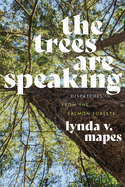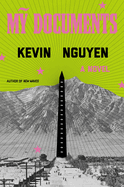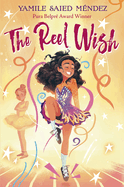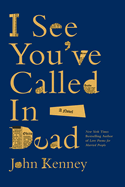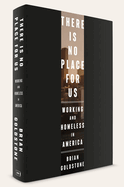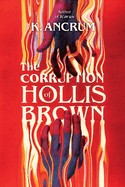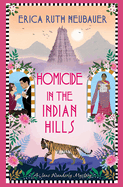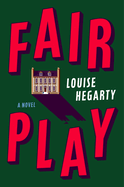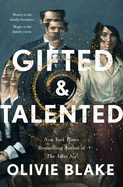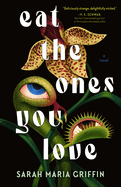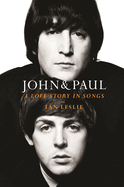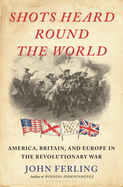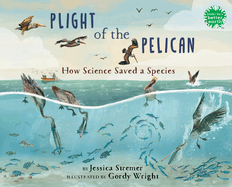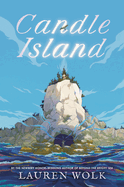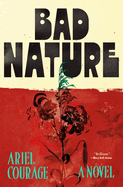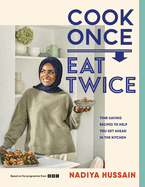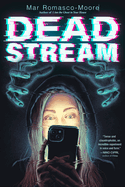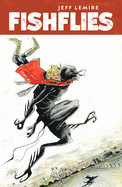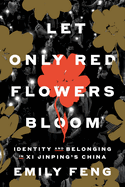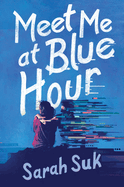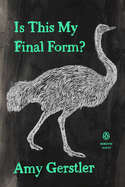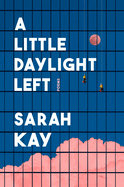Friday, April 25, 2025
Tomorrow is the 12th annual Independent Bookstore Day! The event began in 2014 as California Bookstore Day, and has since grown in popularity to be an international celebration. It's a perfect day to support local bookstores, even stores that aren't participating. Many avid readers visit as many indie bookstores as they can in a single day.
While you're out partying with your favorite booksellers, be sure to look for exciting new releases like The Trees Are Speaking by Lynda V. Mapes, "a stunning and evocative search for the last remaining scraps of old-growth and ancient forest" throughout North America; and the "scalpel-sharp" satire Mỹ Documents by novelist Kevin Nguyen, who crafts a "brilliantly chilling" atmosphere of American paranoia following a series of coordinated attacks. Plus, Yamile Saied Méndez's "inspiring and sincere" middle-grade novel The Reel Wish considers the pressures placed on the physical and mental health of children who find a passion worth pursuing at a young age.
Mỹ Documents
by Kevin Nguyen
In Kevin Nguyen's brilliantly chilling Mỹ Documents, the U.S. suffers several coordinated attacks. When the perpetrators are identified as having surnames like Nguyen and Tran, the government--as it did with Japanese Americans during World War II--rounds up Vietnamese Americans and puts them in internment camps.
Siblings Jen and Duncan have never been close with their half-siblings Ursula and Alvin, but due to the American Advanced Protections Initiative (AAPI), their communications are now entirely cut off. Jen and Duncan, both students, are relegated to camp, while Alvin, with a Google job, and Ursula, a white-passing budding journalist, are exempt. No devices are allowed inside camp, but when a bootleg system develops, Jen manages to send messages about the goings-on to Ursula, who writes exposés that bring her heady career ascension. But at what cost to Jen and the other detainees?
The title alone indicates how clever Nguyen is with language. The tilde on the y in Mỹ transforms the title's meaning to American Documents in Vietnamese--documents that couldn't keep Jen and Duncan safe. Nguyen also takes AAPI, which usually stands for Asian American Pacific Islander, and makes it represent the law that targets those very people. Mỹ Documents is a condemnation of racism in the U.S. and the country's willingness to repeat its worst mistakes. It's also a well-painted portrait of life inside the camp, in all its terror and banality and, yes, humor. But perhaps most important is how Nguyen avoids model-minority clichés in depicting the siblings. They're imperfect and sometimes unlikable but always relatable. They're not the enemy. They are Americans. --Elyse Dinh-McCrillis, reviewer and freelance editor at The Edit Ninja
Discover: Mỹ Documents is a scalpel-sharp depiction of American racism, as well as a poignant and funny portrait of how that affects four young Vietnamese American siblings trying to shape their identity.
I See You've Called in Dead
by John Kenney
One might expect a novel with the title I See You've Called In Dead to be full of zany humor, especially given that the author, New Yorker contributor John Kenney (Truth in Advertising), has received the Thurber Prize for American Humor. One wouldn't be wrong. But like the film Harold and Maude, which this thoughtful work references, Kenney's book begins with an offbeat premise and deepens it into a life-affirming piece about making the most of one's precious few seconds on Earth.
Bud Stanley, a 44-year-old wire service obituary writer, has learned a lot after writing 724 obits, such as that "you are more likely to be killed by a cow than a shark." What this divorced man hasn't learned is to check his impulses. After an unsuccessful first date and the discovery that his ex-wife, who had a miscarriage when they were married, now has a baby girl, he gets drunk in his Brooklyn apartment. He writes his obituary--complete with false claims that he was "the first man to perform open-heart surgery on himself "--and posts it to the company's site.
His employer is not amused. Readers will be, however, at the mounting consequences, but their amusement will be leavened by more serious storylines, most notably Bud's interactions with Tim, his paraplegic landlord, and Clara, a woman who (while much younger than Maude) attends strangers' funerals. This story with wacky elements ends up addressing questions of mortality and the need to appreciate beauty. I See You've Called in Dead is a charmer. --Michael Magras, freelance book reviewer
Discover: In John Kenney's life-affirming I See You've Called In Dead, a obituary writer posts his own fake obituary online and develops unexpectedly rich friendships as he deals with the fallout.
Plum
by Andy Anderegg
Andy Anderegg's evocative debut novel, Plum, tells a story of a girl growing into a woman amid abuse. J begins as an unnamed young girl who sees her brother take the brunt of her father's anger while the two of them daydream of escape. The novel follows her through the chaos of a high-voltage adolescence, then into adulthood, where she tries to make a life for herself while wrestling with the lasting effects of trauma. Anderegg has a particular knack for infusing big emotion into small and metaphorical moments, like the scattered, rotting plums referenced in the title.
It's a devastating work full of keen observations written in captivating prose, made even more arresting by the second-person form. "One day you will be older, you will have the right look, and you will have escaped this.... 'What's wrong with her?' people will never wonder. Instead they will think, 'What's her secret?' Do not give up until then." This distinctive narrative voice grounds each lightning strike of heartbreak.
The ending is deeply satisfying, the result of an author who has found exactly where the emotional center of the story is. J's life is an exploration of small triumphs against powerful forces, showing the many small ways of moving forward when progress doesn't always feel like progress until one looks back. Plum is a gripping, vital read--a shock straight to the chest. --Carol Caley, writer
Discover: Plum tells a story of growing from girl to woman amidst abuse in a distinctive, electric voice.
The Colony
by Annika Norlin, transl. by Alice E. Olsson
The Colony is a strange and mesmerizing novel that unravels, thread by thread, the narrative trope of escaping society for a back-to-the-land utopia.
Emelie lives a busy life in the city, with a demanding job and packed social calendar. But one day she wakes up and can't get out of bed. A neighbor cares for her, taking her for trips into the forest that begin weaving a new pattern for her life.
The novel has light surrealistic touches as Emelie begins living in a tent in the woods, reveling in the quiet peace of nature. She observes a nearby group with an alternative lifestyle and becomes increasingly infatuated with them. The Colony expands to explore these individuals, who each have complicated emotional patterns. The reality of their lives outside of society unfolds, revealing challenges that are typically skimmed over in back-to-nature daydreams--notably, but not solely, medical care.
Swedish author Annika Norlin thoughtfully digs into serious topics while still finding humor in the absurd--comedy that is expertly translated by Alice E. Olsson. On the day Emilie is unable to get out of bed, she talks to herself, determined to make her social commitments: "I hear you, my body said, but nothing happened.... My texting thumbs were still with me. They never fail!"
The story magnifies every warp and weft of human nature, relationships, and power dynamics--and all the flaws and contradictions that don't become apparent unless looked at closely. The Colony is a brilliant novel of love, trauma, and bonding, a careful examination of the human condition that never lets its characters fall into simplifications or easy answers. --Carol Caley, writer
Discover: The Colony is a strange and mesmerizing novel that unravels, thread by thread, the narrative trope of escaping society for a back-to-the-land utopia.
Mystery & Thriller
Homicide in the Indian Hills
by Erica Ruth Neubauer
The politics, culture, and history of 1927 India intersect in Homicide in the Indian Hills, an entertaining mystery by Erica Ruth Neubauer (Murder at the Mena House) that features the winsome Jane Wunderly.
Jane and her new husband, Redvers Dibble, are spending their honeymoon in southern India, at the Ootacamund hill station. As the movement for Indian independence grows, Redvers, a spy for the Crown, has been sent on a mission to promote a British commission to reform Indian law. Redvers, who supports Indian independent, admits that for the first time he doesn't agree with his assignment, and he arranges secret meetings with resistance leaders. The couple becomes friendly with British expat Gretchen Beetner, a former member of the Indian National Congress, until she is killed, supposedly by a tiger, although the condition of her body calls this into question. The couple suspects that Gretchen's vehement opposition to British rule led to her murder. As they investigate the case themselves (they don't trust the corrupt local police), a second death supports the couple's suspicions.
Jane and Redvers's close relationship elevates the plot, showing the love and respect they hold for each other. As a married couple and insightful investigators, they make a solid team. Neubauer's series has demonstrated that Jane is a curious traveler who is eager to experience local cultures. Early on, Jane is interested in trying Indian food but is served British cuisine instead, illustrating the disregard the British have for the Indian population. Evocative scenery, such as fragrant tea plantations, and politics "with too many currents flowing beneath the dark waters" showcase India's beauty and history. --Oline H. Cogdill, freelance reviewer
Discover: Newlyweds Jane Wunderly and Redvers Dibble are caught up in the movement for India's independence in this evocative historical mystery set in 1927.
Murder by Cheesecake
by Rachel Ekstrom Courage
Murder by Cheesecake: A Golden Girls Cozy Mystery doesn't require its subtitle's penultimate modifier: anyone who has ever watched The Golden Girls (1985-1992)--and who hasn't watched the classic sitcom centered on four middle-aged-and-up Miami housemates? --knows that one of the show's signatures is "cozy." Another is "witheringly funny," a quality abounding in Rachel Ekstrom Courage's welcome first title in a projected series.
Rose is planning the wedding of a cousin who was like a niece to her back in their hometown of St. Olaf, Minn. During the prewedding Welcome Tuna Teatime (it's a St. Olaf tradition) at the groom's family's Miami hotel, Rose finds a corpse in an industrial freezer; the dead man is holding a knife, and he's facedown in a cheesecake made by Rose. Did her cheesecake kill the guy? Suspect-wise, the police are more interested in Rose's housemate Dorothy, who identifies the corpse as the man with whom she went on a recent (and terrible) date. Can the four housemates solve the murder and clear Dorothy's name?
Courage succeeds valiantly at creating interior lives for Rose and Dorothy that ring true to their TV personas. Critically, she has a fan's ear for the show's rapid-fire dialogue and a superfan's eye for its decor (the rattan!) and fashions (those blazers!). As a mystery, Murder by Cheesecake is serviceable; as an entertainment, it's a delight and a gift to Golden Girls fans who had given up all hope of a new adventure for the fearsome foursome. --Nell Beram, author and freelance writer
Discover: A dead body is found facedown in a cheesecake in this welcome and witheringly funny first title in a projected mystery series starring the characters from The Golden Girls.
Fair Play
by Louise Hegarty
Readers of both classic mysteries and literary fiction will enjoy this intermingling of the two in Louise Hegarty's first novel, Fair Play, an utterly fresh approach to the standard whodunit that adds emotional heft to playful pastiche.
Abigail has prepared, with her usual flair, the annual New Year's Eve murder mystery-themed caper that doubles as her older brother Benjamin's birthday party. The assembled guests are mostly their close friends. The murder is solved in due course, and merrymaking goes into the wee hours. But this January 1, instead of celebrating with his hungover friends in the mansion they've rented for the occasion, Benjamin is found dead.
Here, the novel splits into two parallel storylines. One of them follows Abigail as she deals with the logistics of the funeral and the shattering grief of losing her brother. In this path, her return to her life is piecemeal and painful, and she struggles to make sense of what's happened.
In the other strand, their story is transformed to reflect the classic conventions of the mystery genre. Many of the trappings of a good drawing-room mystery are well in place: a locked-room murder, a plausible roster of suspects with more or less apparent motives, and an acclaimed detective, Auguste Bell. Hagerty infuses this play on the traditional narrative with other self-referential commentary and winks at genre specifics, including four pages of prescriptions and rules for mysteries taken from an array of writers.
Hagerty skillfully manipulates the genre, calling attention to the reader's expectations and subverting familiar tropes in the service of nuanced storytelling. Fair Play is a thoroughly satisfying and thought-provoking read. --Elizabeth DeNoma, executive editor, DeNoma Literary Services, Seattle, Wash.
Discover: Louise Hegarty's debut novel is a clever approach to the drawing-room mystery, satirical and thought-provoking.
Science Fiction & Fantasy
Gifted & Talented
by Olivie Blake
Three gifted siblings don't live up to their supposed potential in Olivie Blake's darkly humorous Gifted & Talented, a novel of magic, technology, and family rivalry. One part inheritance saga and one part takedown of the billionaire meritocracy, Gifted & Talented follows the embattled Wrens in the days just before and following the death of family patriarch and Wrenfare CEO, Thayer Wren.
Blake (Masters of Death) introduces the siblings and their special abilities in chapters narrated by an omniscient "voice of God." Liberal congressman and electrokinetic Arthur, on the verge of losing his next campaign, attends an orgy with his extramarital partners and learns that one of them is pregnant. Former ballerina Eilidh is returning from a silent wellness retreat when her plane starts to crash. She saves the passengers by letting loose the entity that dwells in her chest--and a plague of locusts. Caustic entrepreneur Meredith's ex-boyfriend, now an investigative reporter, confronts her about the massive lie that governs her professional life: the mental health app she built doesn't actually work. Meredith used her ability to change minds and rigged its clinical studies. With their lives already falling apart, the self-involved Wrens learn that their father has died. And has left behind two wills.
As they reckon with their complicated relationships with their father, their careers, and one another, the Wrens must decide if the paths on which they were set as privileged prodigies are worth everything they gave up to stay on them. Gifted & Talented is a great fit for fans of Succession and anyone who feels they didn't quite live up to expectations. --Suzanne Krohn, librarian and freelance reviewer
Discover: Olivie Blake takes down the mirage of meritocracy as three "gifted" adult siblings fail at life and fight over an unknown inheritance when their billionaire father dies.
Eat the Ones You Love
by Sarah Maria Griffin
Irish writer and zine producer Sarah Maria Griffin (Spare and Found Parts; Other Words for Smoke) shocks and fascinates in Eat the Ones You Love, a queer love story that turns into horror sci-fi.
Thirty-something Shell Pine's life is at a standstill. She's lost her job as a graphic designer, left her longtime partner, and moved into her parents' house in a Dublin suburb. After spotting a "Help Needed" sign outside of a flower shop in a nearby past-its-prime mall, Shell gets a job as a florist's assistant, desperate to prove she's found a new direction for her life. But that new direction proves to be less the flowers she tends than the florist she tends them for: the beautiful and frazzled Neve.
But Neve's talent for plants harbors a dark secret. An unusual orchid called Baby grows inside Neve's shop and has already entangled her in his murderous web. But while Baby bides his time devouring bystanders to help him grow, it is Neve he truly wants to consume, as well as the women in Neve's life, like Shell, who keep getting in his way.
Set in the familiar half-abandoned landscape of commercial retail, Eat the Ones You Love is firmly rooted in a desperate desire to consume, made more unquenchable by its increasingly amorphous form. Griffin viscerally depicts the engorged, grotesque version of Baby's hunger, luxuriating with him in his post-murderous state. Mesmerized by this pulsing, insatiable want, all readers of Griffin's absorbing prose can do is watch as Baby and the people around him gorge themselves until they split at the seams. --Alice Martin, freelance writer and editor
Discover: Irish writer Sarah Maria Griffin's Eat the Ones You Love is a deliciously disturbing novel about consumption, desire, and the monstrosity that both beget.
Biography & Memoir
John & Paul: A Love Story in Songs
by Ian Leslie
Beatles books numbering in the hundreds have chronicled what John, Paul, George, and Ringo did; relatively few books have focused on why, in the psychological sense, they did it. Ian Leslie turns the "Why?" on the band's two principal songwriters in John & Paul: A Love Story in Songs, a biography of a friendship and a wholly original way to get at the enduringly fascinating Beatles story.
Leslie, a British author of books on human behavior, walks readers chronologically through John and Paul's relationship, titling chapters for songs (not all of them Beatles compositions) with some significance to the pair. For example, in "Yesterday," Leslie looks at how the monumental success of that McCartney song threatened Lennon's sense of his dominant role in the songwriting partnership. Leslie gets granular with John and Paul's collaborations, even identifying "a subgenre of Lennon-McCartney songs" in which they switch off on the vocals "so that the song feels as if it emanates from a double consciousness."
Readers shouldn't expect nonstop psychologizing: John & Paul finds the pair on the road and in the recording studio as often as on Leslie's (figurative) couch. He's persuasive with his contention that one reason people have a hard time getting their heads around the Lennon-McCartney dynamic is because "we have trouble thinking about intimate male friendships." Leslie goes on to quote Paul on John in 1981, the year after Lennon's death: "I realise now we never got to the bottom of each other's souls." This book comes awfully close. --Nell Beram, author and freelance writer
Discover: This biography of the Lennon-McCartney friendship is a wholly original way to get at the enduringly fascinating Beatles story.
Restaurant Kid: A Memoir of Family and Belonging
by Rachel Phan
Near the end of her debut memoir, Rachel Phan wonders: "What do we owe our parents? It's the question I, and so many other children of immigrants, have to wrestle with constantly." The product of her wrestling is Restaurant Kid, which goes beyond the comforting familiarity of a local Chinese restaurant's menu and behind the swinging kitchen door. Phan brings readers into this emotionally honest account of how her parents spent long days running their family business in a small Canadian town after fleeing China, then Vietnam. The restaurant isn't separate from family life but rather is Phan's family life in innumerable ways as she spends hours in their apartment above it longing for the parental attention being diverted there.
Phan recounts growing up as a third-culture kid struggling to connect with her parents, and the racism she faced as a member of one of the only Asian families in their small town. It impacted her sense of self-worth and was the impetus behind some detrimental choices that harmed both herself and her parents.
The memoir culminates in a family trip to Vietnam where Phan and her siblings are able, as adults, to see their parents in a more complete light. They begin to understand how difficult it is to bear the weight of an inherited cultural history of trauma and displacement as they learn what their parents endured before emigrating and also witness the happiness they are capable of. With regret for what was lost and appreciation for what she's finding now, Restaurant Kid is a heartfelt and complex love letter to family and to an immigrant experience. --Kristen Coates, editor and freelance reviewer
Discover: A heartfelt, honest memoir about the meaning of home and growing up in a family restaurant as a third-culture kid.
The Hollow Half: A Memoir of Bodies and Borders
by Sarah Aziza
"Grief can give a body power, pare it down to recklessness. And there is something about life on the edges that allows a mind to cut both ways," writes Palestinian American author and translator Sarah Aziza in The Hollow Half: A Memoir of Bodies and Borders. Aziza brings readers through not just her history and struggle with anorexia, which almost ended her life, but how she connected to her family's past in the process. After her near-death experience, she began to consider more deeply her relationship to her late grandmother. Aziza links the layers of displacement, of how she whittled away self and identity in order to find a way to fit. She describes her path from "a mixed child not yet mixed up" to someone who pruned away half of herself to someone who found herself again in the excised stories of her ancestors, even tracing their steps through Gaza.
Aziza's captivating prose hums with loss, not just for her grandmother but also for all the lives her family, exiled from Palestine, might have once lived. Understanding the erasure of a people intertwines with Aziza's experiences of understanding her body. But even among deftly conveyed personal and geopolitical histories, she still writes in a voice soaked with hope; her journey is a gripping, powerful account of finding resilience in the face of destruction and trauma on a generational scale. The Hollow Half is a stunning testimony to what it might mean to continue to resist erasure, and to choose life even when it feels too hard. --Michelle Anya Anjirbag, freelance reviewer
Discover: In her evocative memoir, Palestinian American writer and translator Sarah Aziza crafts a stunning account of multigenerational history, loss, and (re)construction of identity.
Godstruck: Seven Women's Unexpected Journeys to Religious Conversion
by Kelsey Osgood
Kelsey Osgood's second book, Godstruck, is a thoughtful group biography of seven women who have taken the "wildly countercultural" step of embracing organized religion, after growing up outside of or minimally connected to it.
Osgood (How to Disappear Completely) augments her profiles with philosophical context and social commentary that illuminate facets of the women's relationships to religion. For instance, Angela, a science journalist who wrote a book about asexuality, converted to Quakerism and provides Osgood with an opportunity to discuss faith-led social justice movements and the trade-off between rationality and belief. Evangelicalism helped Sara cope with the trauma of experiencing the Boston Marathon bombing. Referencing prominent early psychologist William James's theories, Osgood compares religion's effects with those of psychotherapy, mindfulness meditation, and other wellness initiatives.
Some of the women--such as Kate, who converted to Mormonism--focus on what the LDS church might call a "personal revelation." Kate and Hana, who espoused Islam, began their spiritual journeys by reading Scriptures. Others, like Christina, who joined a small Amish community in Maryland, first satisfied their curiosity by attending sacred gatherings.
Osgood's own story of anorexia and conversion to Orthodox Judaism appears throughout. She doesn't shirk difficult questions about cultural appropriation and patriarchal expectations that arise. However, she affirms unfashionable values such as retreat, vocation, silence, modesty, and sacrifice. Religious women are happier, less lonely, and more connected to their communities, she insists; the "interplay of belief and behavior" enriches their lives.
These absorbing biographies offer a deep dive into particular faith groups as well as a growing cultural trend. --Rebecca Foster, freelance reviewer, proofreader and blogger at Bookish Beck
Discover: Kelsey Osgood's thoughtful group biography considers the philosophical and social context for seven young women's "wildly countercultural" decisions to adopt an organized religion.
Eminent Jews: Bernstein, Brooks, Friedan, Mailer
by David Denby
In the provocative Eminent Jews, journalist and film critic David Denby defines four iconic artistic disruptors--Leonard Bernstein, Mel Brooks, Betty Friedan, and Norman Mailer--as paramount risk takers of their generation, providing detailed historical context and incisive critical analysis of their culturally significant contributions to their respective creative fields.
Denby (Snark, Lit Up) attributes the communal chutzpah of his subjects to having "lived in the 'Golden Era' of relative safety and abundant achievement for the American Jews after the Second World War." Their audacious personalities "took advantage of liberty in every possible way."
Brooks's "rage and daring" is personified in brash humor, learned in the Catskills "Borscht Belt," developed in the writers' room for Sid Caesar's Your Show of Shows, and perfected on screen (Young Frankenstein) and stage (The Producers). Even with death as an obsessive theme, the force of farce was with him and his audiences. The inconvenient truths Friedan experienced during the late 1950s surfaced in radical protest grounded in "her own aggrieved sense of herself." Supported by "Reform Judaism's injunction tikkun olam," which encourages Jews to focus on "the necessity of repairing the world," Friedan's efforts culminated in the societal tsunami of The Feminine Mystique. Mailer's boisterous ego bled into the boxing ring and into hard-edged fiction and reactionary journalism (The Naked and the Dead; The Armies of the Night), but also a violent marital history. Bernstein shattered musical expectations for classical composition and conducting, on Broadway and in film, with his volcanic temperament and powerhouse performances.
Denby's comprehensive use of memoirs, biographies, and interviews, supplemented with personal anecdotes, renders indelible portraits of these eminent Jews who simply wanted to be appreciated and remembered. --Robert Allen Papinchak, freelance book critic
Discover: Informative and entertaining, Eminent Jews celebrates an exemplary quartet of artists in film, politics, literature, and music with adept prose and incisive analysis.
History
Shots Heard Round the World: America, Britain, and Europe in the Revolutionary War
by John Ferling
The global impact of the American Revolution takes center stage in Shots Heard Round the World: America, Britain, and Europe in the Revolutionary War, a thoughtful history by John Ferling (John Adams; Winning Independence).
Popular histories of the American Revolution often mention the military participation of a few European notables, such as the Marquis de Lafayette and Baron von Steuben, and French Foreign Minister Vergennes's role in forming the Franco-American alliance, but keep their focus firmly on the 13 rebelling colonies. Not so in Ferling's examination of how a colonial rebellion became a world war--France, Spain, and the Dutch Republic were far from minor backers of a struggle limited to the North American mainland; they figure as major players in their own right. Ferling adroitly demonstrates how their interests in the Caribbean, Florida, and North America west of the British colonies turned the war into a threat to the larger British empire. These interests did not always completely align with their American allies (a Britain weakened by war could prove advantageous to Spain, but Spain was wary, as it knew the new country would expand toward its Louisiana territory).
Sometimes a little dry, but always informative, Shots Around the World presents a different, detailed angle on the American Revolution. Ferling offers an insightful examination of military commanders and civilian officials, including an uncommonly evenhanded assessment of British general John Burgoyne. Shots Heard Round the World offers a new appreciation of the judgments made and how uncertain the outcome of the war was until the very end. --Kristen Allen-Vogel, information services librarian at Dayton Metro Library
Discover: An insightful examination of the American Revolution as a world war offers fascinating new perspective on the competing interests of all the nations involved.
Social Science
There Is No Place for Us: Working and Homeless in America
by Brian Goldstone
Journalist and anthropologist Brian Goldstone compassionately brings readers to the city of Atlanta, Ga., and the efforts of several "working poor" families who are trying to keep roofs over their heads in There Is No Place for Us. With Goldstone's true-to-life reporting, readers are not guaranteed happy endings to every story.
Goldstone shows readers the precarity of being working class in the 21st-century United States. Even Maurice and Natalia Taylor, who were married and both full-time workers, found that their family wasn't safe from homelessness. Families shuffle from "dingy" apartments to the living room floors of relatives, to extended-stay motels, the backseats of cars, and even unsafe rooming houses. The Simmons family found themselves secretly staying in a storage room in the "January chill" and sleeping "on a thin cushion of bath towels." Without reliable housing, adults find employment increasingly challenging to maintain. Through the accounts of the families featured, Goldstone illustrates how difficult it is to get ahead as debts and evictions pile up. Aid is hard, if not impossible, to obtain.
As he followed along with these families between 2019 and 2022, Goldstone witnessed the fallout of the Covid-19 pandemic on their lives. Throughout this carefully observed work of reportage, Goldstone viscerally portrays the stress and agony the families experience. Goldstone takes pains to be truthful yet depicts challenges without judging or condemning the choices any of these families made when there were simply no good choices available.
Realistic, gritty, and infuriating, There Is No Place for Us is an excellent companion to Evicted or Poverty, Inc. --Alyssa Parssinen, freelance reviewer and former bookseller
Discover: In carefully observed reportage, There Is No Place for Us lays bare the reality of five working-class families in Atlanta, Ga.
Psychology & Self-Help
Ordinary Time: Lessons Learned While Staying Put
by Annie B. Jones
Annie B. Jones owns an independent bookstore in the small Southern town of Thomasville, Ga. She is also the host of a podcast about books called From the Front Porch. With the release of Ordinary Time, Jones can add "memoirist" to her growing list of literary milestones. With upbeat warmth, wit, and wisdom, Jones reflectively chronicles all she's learned over her years of small-town living.
In her younger, more restless days, Jones, a native of Tallahassee, Fla., aspired to live as a journalist in New York. However, after high school, she wound up attending a small college in Alabama and fell in love. Since graduation, she and her husband have remained happily entrenched in the South. They live "up the road" from her parents. "Staying put requires a certain strength of imagination," Jones claims. "I wanted to write a book for people who stayed, but I also wanted to honor those who left. Because eventually, we'll all do a lot of both, leaving and staying."
Jones is a self-proclaimed "stayer," and her cultivated awareness oozes with gratitude at being able to turn her passion for books into a livelihood within a community she values and loves. This recognition binds her comforting, tender narrative that, like a beautiful quilt, is composed of a patchwork of personal stories rooted in themes of love, marriage, faith, and friendship. The day-to-day moments Jones shares will undoubtedly inspire readers to find meaning, joy, and purpose in life--no matter where they live. --Kathleen Gerard, blogger at Reading Between the Lines
Discover: A book lover tenderly chronicles all the warmth, wit, and wisdom she's acquired after choosing to live in a small Southern town.
Nature & Environment
The Trees Are Speaking: Dispatches from the Salmon Forests
by Lynda V. Mapes
Lynda V. Mapes (Breaking Ground; Witness Tree) takes her readers on an arboreal exploration in The Trees Are Speaking: Dispatches from the Salmon Forest. It is a stunning and evocative search for the last remaining scraps of old-growth and ancient forest scattered across the North American continent. By doing so, she makes an impassioned case alongside researchers, conservationists, and Indigenous environmental stewards and activists for protecting these areas, not just for the sake of the trees but for the whole and holistic ecosystems that depend on them--humans included.
Mapes carefully educates readers on the importance of the interconnection between the overall health of forests and fish, including salmon, thereby emphasizing how the well-being of forests affects the health of waterways. She also paints an dynamic picture of the life encapsulated within forests that goes deeper than just the trees that people see at first glance. Importantly, she does not just highlight what has been lost to deforestation but also solutions in progress, such as the restoration work of the Penobscot Tribe in Maine. She also illustrates innovators who are considering more and more new ways to reconnect with forests, placing their focus on local, sustainable supply rather than having forestry practices driven by the demands of global markets.
As Mapes succinctly points out, "The resilience of nature, if allowed to function, is 100 percent reliable." She listens to the trees, and their many disparate protectors, custodians, and relations, and helps readers find a better way to hear what they are saying. --Michelle Anya Anjirbag, freelance reviewer
Discover: Lynda V. Mapes paints an evocative picture of how healthy lives and environments are wholly tied to old-growth forests, and what can be done better to help them survive.
Mother, Creature, Kin: What We Learn from Nature's Mothers in a Time of Unraveling
by Chelsea Steinauer-Scudder
Chelsea Steinauer-Scudder's luminous debut, Mother, Creature, Kin, explores what it means to mother--to protect and nurture the world--in a time of increasing uncertainty. Delving into the lives of owls, whales, rivers, and other natural phenomena, she considers numerous threats to belonging and flourishing, and urges humans to care for plants, creatures, and one another. With scientific precision and a poet's loving eye, Steinauer-Scudder asks how all humans can "work toward mutual thriving," whether or not they are mothers in the traditional sense.
Mother, Creature, Kin is rooted in multiple landscapes: the midwestern plains and New England forests where the author has made her home; the Atlantic waters inhabited by a declining population of right whales; and the environmentalist Rachel Carson's Maine cottage, Silverledges, as well as a wildlife refuge that bears her name and is surrounded by salt marshes. Steinauer-Scudder describes each setting with precise, evocative detail, and speaks with scientists, researchers, and residents who help her understand these layered ecosystems. While acknowledging the complex problems of climate change and extreme weather, she argues that good mothers--human or otherwise--must live in relationship with the land and multiple species. As she navigates her own daughter's birth and infancy, Steinauer-Scudder puts her ideas into practice, striving to teach her daughter about belonging, adaptiveness, resilience, and deep love.
Digging into such concepts as entanglement, edges, beauty, survival, and imagination, Mother, Creature, Kin is a meditation on the interconnectedness of all beings and a clarion call to cherish and protect this beautiful, embattled planet and its more-than-human inhabitants. --Katie Noah Gibson, blogger at Cakes, Tea and Dreams
Discover: Chelsea Steinauer-Scudder's luminous first book considers climate change and other threats to the planet, and explores ways to nurture and protect landscapes and creatures.
Performing Arts
SMiLE: The Rise, Fall, and Resurrection of Brian Wilson
by David Leaf
Until it was finally released in 2004, SMiLE was music's great lost album. Beach Boy Brian Wilson, the band's troubled genius, wrote and recorded tracks for the album in 1966 and 1967 but then abandoned it. David Leaf's SMiLE: The Rise, Fall, and Resurrection of Brian Wilson is a shambolic-symphonic oral history of the record.
The backstory: in 1966, the Beach Boys released Pet Sounds, which went beyond the sun-drenched, aurally untaxing pop songs the band was known for; critics loved the album. Wilson wanted its follow-up, SMiLE, to go even farther, but the band didn't embrace his new music, and Capitol Records hoped to avoid a repeat of Pet Sounds' disappointing sales. After Wilson shelved SMiLE, the band went on, but, according to Leaf, "the Beach Boys' career as relevant and important record makers was essentially done." Nearly four decades later, Wilson completed SMiLE, releasing it as Brian Wilson Presents SMiLE to critical and fan hosannas.
Leaf--a Beach Boys biographer (God Only Knows)--takes a kitchen-sink approach to telling the story of SMiLE; in his author's note, he calls himself "the curator of this collection of quotes, anecdotes, and essays." This shaggy offering could have used a trim, but it's nevertheless a soaring ode to artistic integrity. It's also a reminder that seemingly inconsequential decisions can shape history. As contributing essayist Harvey Kubernik puts it, "I wonder where pop music would have gone if SMiLE was issued a handful of months before the Beatles' Sgt. Pepper's Lonely Hearts Club Band." --Nell Beram, author and freelance writer
Discover: This shambolic-symphonic oral history tells the story of Brian Wilson's SMiLE, music's great lost album until its 2004 release.
Children's & Young Adult
The Reel Wish
by Yamile Saied Méndez
Eleven-year-old Florencia del Lago learns that dreams are mercurial, malleable things in The Reel Wish, an inspiring and sincere middle-grade bildungsroman by Yamile Saied Méndez (Furia).
Florencia knows she and her best friend Selena deserve lead roles in their exclusive ballet academy's production of the Nutcracker. Both are auditioning for Clara, but "only one girl among dozens [will] be selected for the honor." It is Florencia who becomes "the youngest and first Latina Clara ever." Between regular dance classes and rigorous Nutcracker rehearsals, Florencia doesn't have time for anything else--including schoolwork. Her mother tells her that "hard work pays off," but with Florencia's first performance comes her first panic attack: "I let out my breath in short, painful gasps. Stars popped in my eyes." Selena jumps in to dance Florencia's part and becomes the studio's new star while Florencia is kicked out. At 11, Florencia wonders if she'll ever dance again--until she discovers the "electricity" of Irish dance.
The Reel Wish is an impactful and nuanced look at childhood mental health and the pressures children sometimes face when pursuing their passions at an early age. Florencia's panic attacks are realistic, as are the responses of those around her--not everyone reacts well or is supportive. Still, Méndez brings a compassionate lens to Florencia's struggles. There is no magic wand to remove the attacks entirely, and not all her relationships survive, but Florencia finds supporters willing to stand in her corner and she learns that a true passion never fades. --Kyla Paterno, freelance reviewer
Discover: After a panic attack forces her out of her starring role in the Nutcracker, an 11-year-old heals through family, therapy, and a new form of dance in this heartfelt and pragmatic middle-grade novel.
The Corruption of Hollis Brown
by K. Ancrum
The Corruption of Hollis Brown by K. Ancrum (Icarus; The Weight of the Stars) is a singularly intimate supernatural YA romance that follows a self-destructive boy who shares a body and forges an exhilarating connection with the ghost possessing him.
Seventeen-year-old Hollis Brown is an impulsive "asshole." He gets into fights, becomes reckless when angry, and won't talk to his friends about why he stands dangerously close to speeding trains every morning. Thus, he gives little thought to bargaining with a mysterious teenager living in the woods: Walt will help Hollis improve himself, Hollis will give Walt food and shelter. Walt, however, is a ghost, and possesses Hollis. The initial horror of Walt's trickery eases as Hollis learns to trust his possessor; they begin to compromise, controlling different parts of Hollis's body at different times. Hollis grows to think Walt is "spectacular," but Walt, who sees himself as an "abomination," fears letting Hollis love him.
In short, vignette-like chapters, two broken boys find pieces in one another to allow themselves to become whole. Ancrum redefines possession and brilliantly tackles self-loathing, depicting two young men openly expressing emotions and tending to one another's needs. A heady passion between Hollis and Walt ignites through tender moments of vulnerability, devilishly bold flirting, and incomparable intimacy (a touch like "souls scraping together... like charcoal... a thousand holes and a thousand places for them to catch). There are agonizing twists, a sweet mom-son relationship, exceptionally well-developed side characters, and even a playlist and a few recipes. A transcendental read. --Samantha Zaboski, freelance editor and reviewer
Discover: A troubled teen and the wayward ghost possessing him fall in love in this emotionally fraught and inimitably romantic supernatural YA.
Plight of the Pelican: How Science Saved a Species
by Jessica Stremer, illus. by Gordy Wright
The creators of Great Carrier Reef, author Jessica Stremer and illustrator Gordy Wright, reunite in Plight of the Pelican to tell the story of the water bird's near-extinction. Through playful, enlightening text and dazzling illustrations, Stremer and Gordy inform their audience about the importance of conservation efforts at a time when climate change threatens many species around the globe.
Stremer mimics the flight of the pelican with the formatting of her diving and rising text, which lyrically relates the recent history of the majestic bird. In the 1950s, their numbers started to plunge. "Scientists noticed./ And they worried:/ Would there come a day/ when pelicans were gone/ forever?" As Wright's striking gouache and acrylic illustration depicts the sunset, the lines drop toward the bottom of the page. The mirroring of text and image produces an uneasy dread. But readers learn that scientists, activists, and laws intervene to save the pelican from the chemical DDT. "Nearly thirty-seven years after people stopped spraying/ the.../ silently building chemical,/ the number of pelicans went/ high enough/ up/ .../ that they were no longer at risk/ of disappearing." The successful rescue is uplifting and Stremer encourages her readers to use their voices "to stand up,/ speak out,/ and inspire change."
The subject matter of the picture book does not diminish its playfulness--Wright's illustrations change orientation mid-book, shaking up the reading experience, and the colorful, realistic images are continually paired with Stremer's bouncing, active text. Extensive backmatter adds resources for young readers motivated to learn more. Plight of the Pelican makes a superb splash. --Jen Forbus, freelancer
Discover: A seasoned author/illustrator duo gives readers a compelling picture book that reveals the value of conservation efforts through the plight of pelicans.
Candle Island
by Lauren Wolk
Newbery Honor-winning author Lauren Wolk (Wolf Hollow; Echo Mountain) explores loss, creativity, honesty, and friendship with grace and restraint in Candle Island, an elegant, engrossing novel about a girl adjusting to her new home on an island off the coast of Maine.
A few months after 12-year-old Lucretia's father's sudden, tragic death, she and her mother, both artists surviving on the now-famous paintings her mother sells in New York, seek a fresh start on tiny Candle Island. The place seems riddled with secrets but Lucretia has a secret or two of her own. Tensions have always run high between the islanders and the wealthy (and villainous) summer people, so no one knows where to place these newcomers at first. Undaunted, she explores the island and attempts to connect with townies Bastian and Murdock, each of whom has a secret artistic talent. It's only when the strain between island factions reaches a breaking point that the three finally begin to come together in tentative friendship.
Lucretia is notably mature for her age, and her relationship with her mother reflects the way they have adapted to life with shared secrets, grief, and passion for art. Lauren Wolk writes about knotty subjects with delicacy and great care. Characters are frugal with their secrets, divulging them measuredly only after finding recipients worthy of their trust. The complexity of class dynamics is revealed adroitly through interactions with and the attitudes of the residents of the island as the tweens formulate their own identities as artists and citizens of the human race. --Emilie Coulter, freelance writer and editor
Discover: Newbery Honor author Lauren Wolk showcases her superbly lyrical writing in this novel featuring a 12-year-old artist who confronts grief and manages secrets on her new island home in Maine.
Changing Tides
by Júlia Moscardó
In Changing Tides, Júlia Moscardó (Home of the Wild) crafts a tender, quietly resonant story about adjusting to change and forming new bonds. The picture book follows a newly blended family in which Lula, a Black toddler, embarks on a beach trip (her "favorite place") with her father; his white partner, Simone; and Simone's son, Theo. They are "part of the family now," Lula's father says, but Lula isn't ready to accept this transition. She reluctantly helps pack the car, her emotions as unsteady as the waves she will soon meet.
At the shore, Lula's resistance softens: "The sand is hot and vast, and the water is cold and shiny." She races the waves, teasing them, "Ocean, you can't catch me!" When the waves creep too close to the most beautiful sandcastle Lula has ever made, Theo, who appears to be slightly older than Lula, offers a solution: a moat. But then a storm sweeps in and destroys their creation; Theo reaches for Lula's hand in quiet reassurance. By the next morning, Lula and Theo are running to the water together, the first steps toward their future as stepsiblings.
Moscardó's writing is direct and plainspoken, allowing the emotions to take center stage. The illustrations capture the nuances of Lula's journey--her hesitance, her bursts of joy, the subtle moments of connection that form between her and Theo. The ocean tableaux sparkle with sunlit warmth, mirroring the story's growing sense of togetherness.
A gentle, perceptive look at the shifting tides of family, Changing Tides captures the tentative but real steps of a child learning to welcome something new. --Julie Danielson
Discover: Changing Tides is a tender tale of a child discovering how family can grow in unexpected and beautiful ways.
April Stars
The Writer's Life
Maika & Maritza Moulite and Justine Pucella Winans: Final Girls and Zonbis
 |
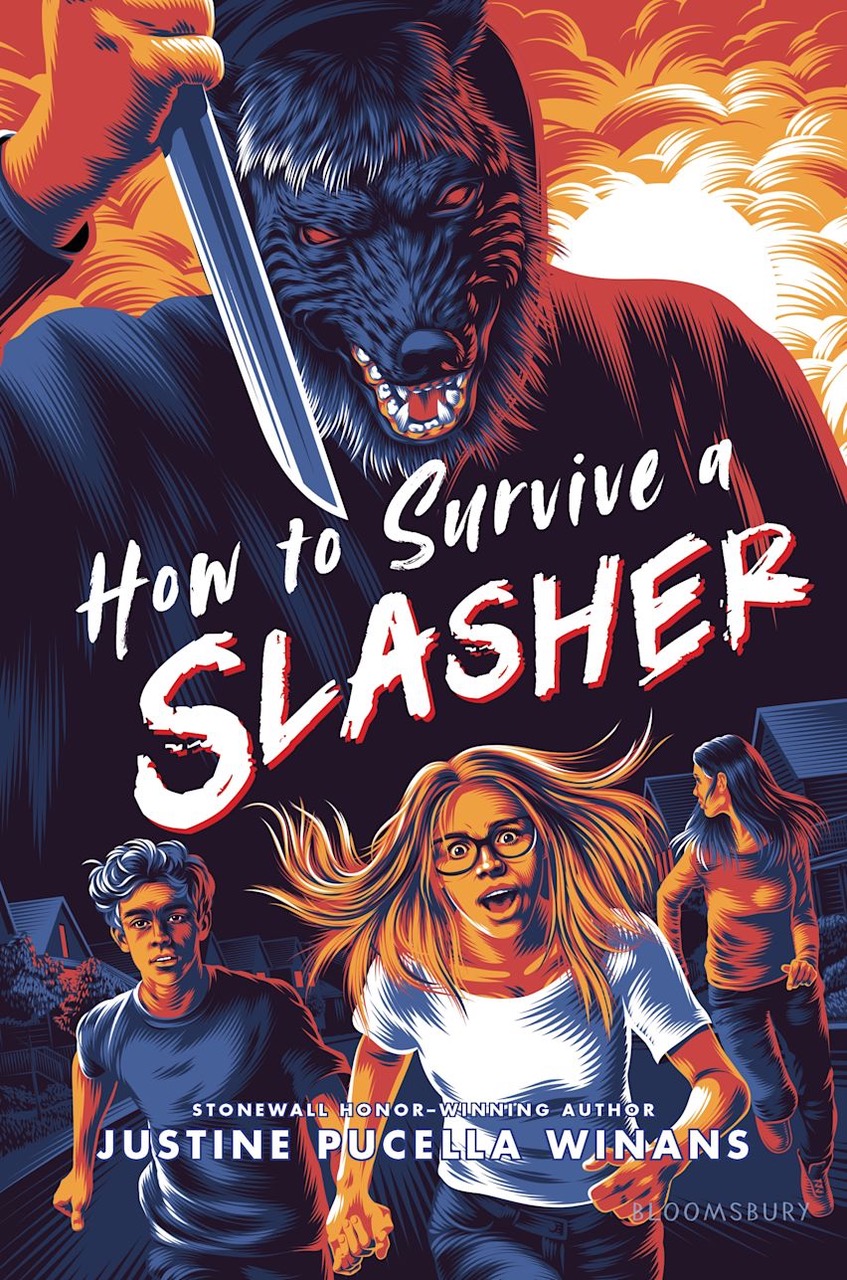 |
Maika Moulite is a Miami native, the daughter of Haitian immigrants, and a doctoral student at Howard University. She's the eldest of four sisters and, when she's not writing, loves listening to audiobooks, journaling, dancing, and singing at the top of her lungs. Maritza Moulite graduated from the University of Florida with a BA in women's studies and the University of Southern California with an MA in journalism. The Moulite sisters have written two previous YA novels together: Dear Haiti, Love Alaine and One of the Good Ones. Their first work of YA horror is The Summer I Ate the Rich (Farrar, Straus and Giroux).
Justine Pucella Winans is a queer and nonbinary writer who lives in Los Angeles with their husband and incredible Halloween-colored cats. Their books include the YA novels Bianca Torres Is Afraid of Everything and One Killer Problem. Their first work of YA horror is How to Survive a Slasher (Bloomsbury).
Here, Winans and the Moulite sisters discuss their first works of YA horror and how their appreciation for specific horror tropes--the final girl and zombies (zonbis)--inspired them to write new takes on those tropes.
Justine Pucella Winans: Both of our books are built around well-known horror tropes. The biggest trope that inspired me is "The Final Girl": this underdog, reluctant hero (I mean, I think even horror protagonists don't want to be in a horror story) has to come into their power to beat the Big Bad. I love an underdog, and I love a reluctant hero, but any horror fan knowns that the role of final girl took on pretty much one shape for a long time. How about you?
Maritza Moulite: The heart of our story is Brielle's identity as a zombie (or in Haitian Creole, zonbi). But the zombies we're used to in the United States are always moaning and groaning and dragging their feet and trying to eat brains. And it's been a huge part of the Western imagination for a long time--the CDC even once used a pretend impending Zombie Apocalypse to show the significance of emergency preparedness.
 |
|
| Maika Moulite (photo: Lydi Ann Mary) |
|
Maika Moulite: But we're Haitian American, and the idea of zombies originally came from Haitian culture: the enslaved people were terrified of becoming zonbi and being forced into eternal servitude--slavery even in death. Brielle is Haitian and American so the way she shows up as a zombie is inspired by the original version and the one Hollywood and American sociologists made up.
Winans: In How to Survive a Slasher, I played with the idea that the Final Girl role isn't limited to gender and showed that anyone can be the hero (especially if you're desperate enough). My protagonist is a genderqueer bisexual whose late father was a Final Girl. CJ just wants to be ignored, but all the characters in roles that would normally be considered small supporting or background roles in a traditional slasher are forced into the leading roles. So, the story still follows the general plot beats of slasher movies and books before it, but it's also aware of these conventions and (lovingly) pokes fun at them. It's definitely campy and meta to explore all these tropes in a story, but I had a lot of fun with it.
Maritza Moulite: Yes! We had the title of the book and the start of an outline, but something still felt like it was missing. Then it came to us: What if Brielle literally ate the rich?
We're so glad you had a fun time writing How to Survive a Slasher, Justine. We're dying to know, though: do you think you would survive a slasher?
 |
|
| Justine Pucella Winans (photo: ZAW Photography) |
|
Winans: I think my only shot in terms of survival is that I watch and read a lot of horror! I hope that (and my limited knowledge of Brazilian jiu-jitsu) would allow me to at least have a fighting chance....
Maika Moulite: We've seen the jiu-jitsu pictures on Insta--you would definitely survive!
Winans: Slasher horror is the type of horror where I feel I'd have the best survival chance because most of the time, it's just another person who is the big bad. If it came to any apocalyptic scenario, I'm pretty sure I'd be one of the first to go.
How do you think you'd fare in a zombie novel?
Maritza Moulite: Well, if they're Haitian zonbi and we had enough time, we might stand a chance. In Haitian lore, zonbi are made through a mixture of various secret ingredients. So, our goal would be to steadily consume the ingredients over many weeks and months, which would hopefully render the potion ineffective because we would've built up a tolerance. But! If they're zombies like the ones in The Last of Us, I would immediately turn into a zombie because I can't say no to baked goods.
Maika Moulite: I would try to appeal to any potential sense of diplomacy that they might have, and I would fail.
 |
|
| Maritza Moulite (photo: Lydi Ann Mary) |
|
Maritza Moulite: Bless her.
Maika Moulite: How was writing this book different from the other works you've published?
Winans: Slasher is my first YA horror/thriller, and my first two YA titles were more lighthearted and funny mysteries. I think Slasher has those moments, but it's really my love letter to slasher movies and fiction. I anticipated it being much more firmly in the campy horror comedy genre, but while I was drafting it, I was going through some loss in my personal life. It sort of translated into the book with my main character, CJ, exploring their own grief in a way I didn't anticipate from the initial pitch.
Maika Moulite: Yeah, we noticed that both of our books have something else in common: dead fathers. Experiencing loss in our family while we wrote TSIATR definitely seeped into our storytelling as well.
Winans: But what about you? Your previous titles aren't horror. Was the writing process different? Are there genres you would like to explore in the future?
Maika Moulite: Dear Haiti, Love Alaine was an epistolary novel, so we got to come up with fun bits of media that came together to make a story. It was like creating a puzzle and making sure we had enough pieces so the audience could see the picture. TSIATR is more straightforward prose, but we can't help but look to the past even in our contemporary works. There are lots of flashbacks to give context to what our protagonist Brielle goes through. We're open to writing any genre though! We're big romance fans--maybe we've got a love story or two to share.
Maritza Moulite: We loved Slasher. It's a unique premise and it showcases the experiences of the loved ones who have been left behind in all the true crime stories our society consumes as entertainment. Plus, it's really funny. What do you hope readers feel at the end of your book?
Winans: Thank you! I feel like there is often an expectation for books to be life changing and world shattering and if someone somehow gets that from Slasher, amazing! But I want to take readers for a ride, give them space to be a little scared or entertained, and to maybe feel smart because they guessed the ending. If someone can relate to CJ's grief or gender identity, that would be awesome, but really, I just want readers to feel like they had a fun time! What about you?
Maika Moulite: We definitely relate to wanting readers to have a fun time! We wrote TSIATR during great personal loss as we navigated our dad's illness and ultimate passing, so it was a bit of an escape for us. As Brielle processes her own grief, she makes some pretty questionable decisions that create a wild ride.
Ultimately, we want readers to be thoroughly entertained even as they question who the true monster in the tale is: Brielle or the billionaires who have all the financial power to make people's lives materially better but choose not to?
Book Candy
Book Candy
"From erotic drawings to Mickey Mouse on a motorcycle," Maurice Sendak's art collection will be auctioned off on June 10 at Christie's in New York City, the New York Times reported.
---
CrimeReads investigated "bog gothic, or 'bogothic': when bogs seep into literature."
---
Mental Floss recalled "when Isaac Asimov decided to secretly write under the name Paul French."
Rediscover
Rediscover: Peter Lovesey
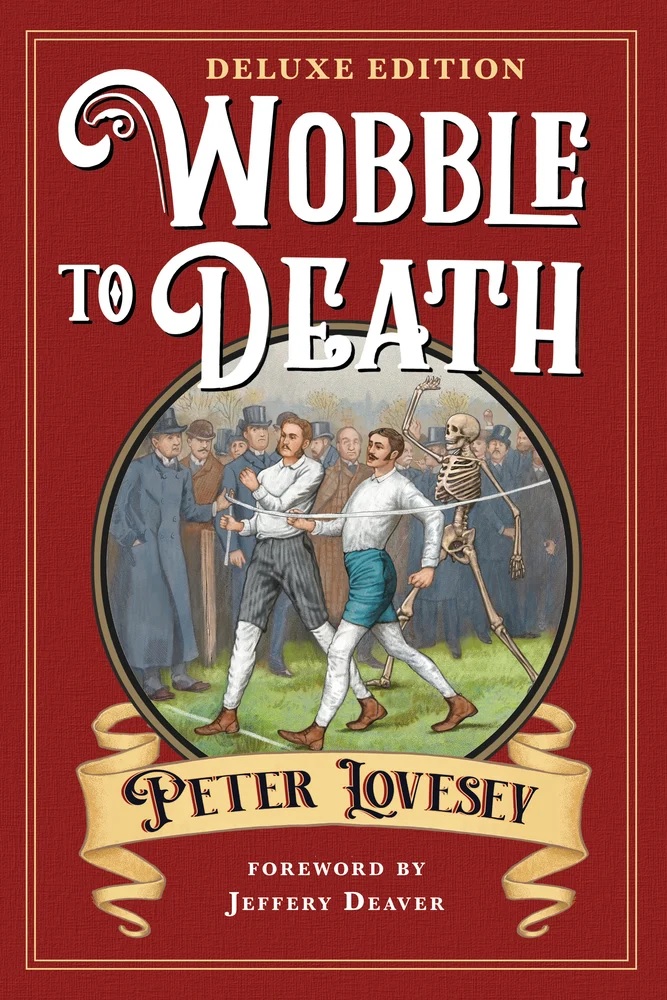 British author Peter Lovesey, who "was a pioneer of the period whodunnit, as the creator of the Victorian sleuth Sergeant Cribb," died April 10 at age 88, the Telegraph reported. "Although there had been a few one-off historical mysteries before the advent of Lovesey in the 1970s, he was generally regarded as the first author to set a successful detective series in the past."
British author Peter Lovesey, who "was a pioneer of the period whodunnit, as the creator of the Victorian sleuth Sergeant Cribb," died April 10 at age 88, the Telegraph reported. "Although there had been a few one-off historical mysteries before the advent of Lovesey in the 1970s, he was generally regarded as the first author to set a successful detective series in the past."
Lovesey's Cribb novels focused on facets of late Victorian life: the music hall (Abracadaver), the underground bare-knuckle boxing circuit (The Detective Wore Silk Drawers), Irish nationalist terrorism (Invitation to a Dynamite Party), or the boating craze that followed the publication of Jerome K. Jerome's bestselling Three Men in a Boat (Swing, Swing Together). "The crimes were investigated by Sergeant Cribb, one of the detectives at the creation of the CID in 1878, and his assistant Constable Thackeray," the Telegraph wrote. "Much of the sardonic comedy that characterized the books came from genteel murder suspects finding themselves brusquely questioned by working-class officers."
Although the series ended after eight books, the detective reappeared in Granada television's Cribb (1979-81), with several of the scripts co-written by Lovesey and his wife, Jacqueline. Starring Alan Dobie and William Simons, the show was also popular in the U.S., where it was nominated for Emmy awards. Other historical crime novels by Lovesey include three featuring "Bertie"--the future Edward VII--as an amateur detective; and The False Inspector Dew (1982), which was awarded the CWA's Gold Dagger for crime novel of the year.
Lovesey's 1991 novel The Last Detective had a contemporary setting, in Bath, and introduced tough cop Peter Diamond. The success of the novel led the author to focus on Diamond for the rest of his career. Last year he published the 22nd Diamond novel, Against the Grain.
Lovesey's many honors and awards include the Mystery Writers of America Grand Master Special Edgar and the Crime Writers' Association's Cartier Diamond Dagger for Lifetime Achievement. In addition to his Gold Dagger for The False Inspector Dew, he received three Silver Daggers (for Waxwork, The Summons, and Bloodhounds); multiple Macavity (Bloodhounds, The House Sitter), Barry (Bloodhounds), and Anthony Awards (The Last Detective); and nominations for the Edgar Award for Best Novel (The Summons) and Los Angeles Times Book Prize (The House Sitter). He received the 2014 Strand Lifetime Achievement Award, the 2010 Grand Master Award from the Swedish Academy of Detection, and the 2008 Malice Domestic Lifetime Achievement Award.
In a tribute, Soho Crime wrote: "In addition to the scope of his unparalleled crime fiction career, Peter Lovesey will be remembered by his many grieving friends as the paragon of decency, compassion, loyalty, self-discipline, and pride in good work--in short, a human example of what it means to live a good life. We at Soho Press have been privileged and honored to be Peter's American publisher for over 30 years, beginning with his now-classic The Last Detective. Fifty years after the publication of his own prize-winning debut, Wobble to Death, Peter collaborated with Soho Crime to sponsor his own first novel contest, launching the career of Edgar-winner Eli Cranor with the publication of Don't Know Tough. A lifelong member of the Detection Club, Peter was respected as a scholar and advocate of the genre as well as a mentee and supporter of new writers. His absence will be deeply felt but the legacy of his remarkable life and work will live on."


